Text
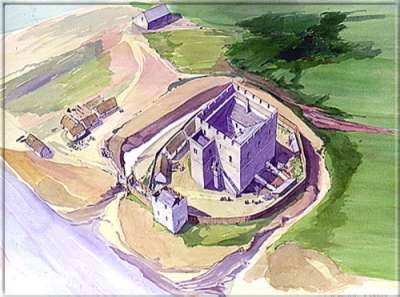
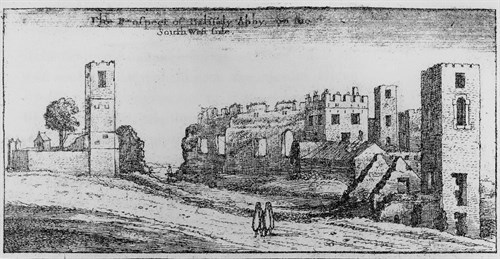

May 18th 1313 saw Robert the Bruce invade the Isle of Man.
The Isle of man has changed hands many times through the centuries, if you go back to Scotland before King Alexander III died, plunging the country into the Wars of Independence, he had extended his Kingdom to include Man and Berwick, both of which are part of England nowadays.
Scotland’s rule was not welcomed in 1275 an uprising in Man against Scottish rule was brutally suppressed. The chronicles tell us that…..
“ Upon the 7th of October, the Fleet of the King of Scotland put into the port of Ronaldsway. John de Vesci and the King’s nobles immediately landed their forces on the island of St. Michael, the people of Man being prepared for the encounter, along with Godred, the son of Magnus, whom they had made their king but a short time previously. The chiefs and officers of the King of Scotland, however, sent an embassy of peace to Godred and the people of Man, offering them the peace of God and of the King of Scotland on condition of their laying aside their absurd presumption, and of giving themselves up to the King and his nobles. As Godred, however, and some of his perverse counsellors did not agree to the terms of the embassy, on the following day, before sunrise, whilst darkness still covered the earth, … an engagement took place, and the unfortunate people of Man, running away, fell miserably “
If you notice the names of Godred and Magnus, the island was still very influenced by the Scandinavians. Their influence was again noted in 1291 when
” the Noble Lady Maria, Queen of Man" a member of the Scandinavian royal family of Man, did homage to Longshanks at Perth. Two years later in early 1293, Walter de Huntercombe, who held Man for a short time, surrendered the island to John Balliol by Edward’s order, of course Edward had the proviso that Balliol swore him allegiance. The next year Balliol refused to send Scottish soldiers to fight with Edward against the French, the Scottish King entered into the Auld Alliance and also formed a little known Alliance with Norway. Furious Edward marched his army into Scotland and the Wars of Independence raged for several years, during this time little is written about Man, it seems he garrisoned soldiers there and it feel under English rule. Edward I and his son Edward II “gave” the Island to differing lords to administrate until 1313, the chronicles tell us that
“In the year 1313, on the 18th of May, Lord Robert [Bruce], King of Scotland, put in at Ramsay with a large number of ships, and on the following Sunday went to the nunnery at Douglas, where he spent the night, and on Monday laid siege to the Castle of Rushen, which was defended by the Ilord Dungali Mac Dowyle 41 against the said Lord King until the Tuesday after the Feast of St. Barnabas the Apostle (June 21), on which day the said Lord King took the Castle.”
On the 20th of December, in the same year, Bruce granted the island to Thomas Randolf, Earl of Moray, “
The defeat of the English at Bannockburn consolidated the Scottish position. It’s a bit vague about what happened but the English seemed to have taken control, under Edward I by 1317, and he had committed the island to the safe keeping of John de Athy and orders him to provide three ships and
” a sufficient armament of warlike men “ to protect ” it against the hostile attacks of our enemies and rebels the Scots.“
But it is a bit confusing as , three months later, Randolf, Earl of Moray, is spoken of as ” being about to set out for the parts of Man,“
Some sort of truce prevailed for some time on the run up to 1328, when the independence of Scotland was formally acknowledged and the King of England gave an undertaking not tc assist any enemies of the Scots to dispossess their of Man,” it is probable that Man had before that date reverted to Scotland.
Roll on to 1333 and the English were at it again, with the help of the “disinherited” they helped John Balliol’s son Edward invade Scotland, which brought us to today’s date that year when Edward III gave orders that possession should be taken of Man. He granted the custody of the island to Sir William de Montacute, and, further, on the 9th of August, he gave it to him as his absolute possession-in the words of the grant - he
“ remitted, surrendered, and … assigned peaceful possession of all the rights and claims which we have, have had, or in any way could have in the Isle of Man, … so that neither we, nor our heirs, nor any other in our name shall be able to exact or dispose of any right or claim in the aforesaid Island,” thus not reserving any service to be rendered to himself.“
The Scots again threatened to retake Man in 1337 but it was unsuccessful, the Isle of Man has since been seen as part of England.
16 notes
·
View notes
Text
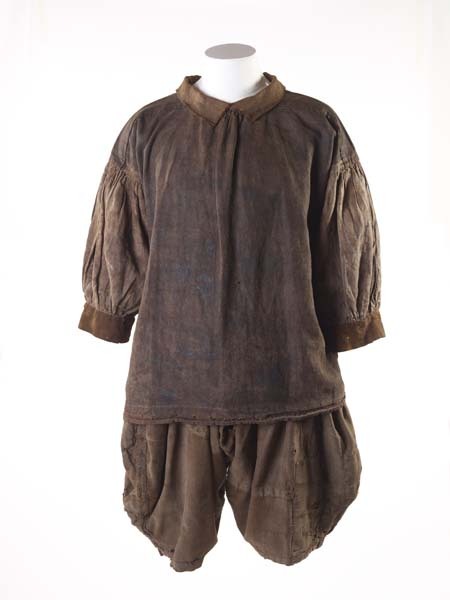

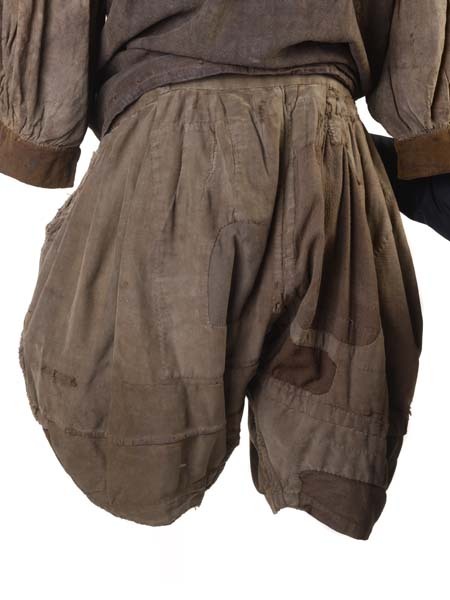

Sailor's Slops
1600s-1700s
Extremely rare survival of a shirt and breeches, called slops, as worn by sailors from the late 16th through to the 18th centuries. This unique set of loose, practical sailor’s clothing reveals life aboard ship. They are made of very strong linen to endure the hard, rough work. There is tar across the front from hauling ropes. The breeches are heavily mended and patched, which the sailor would have done himself.
The Museum of London (ID: 53.101/1b)
3K notes
·
View notes
Text
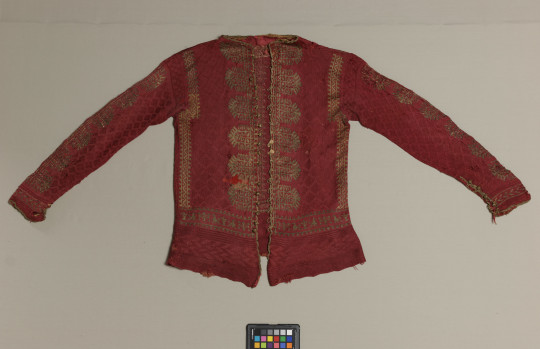
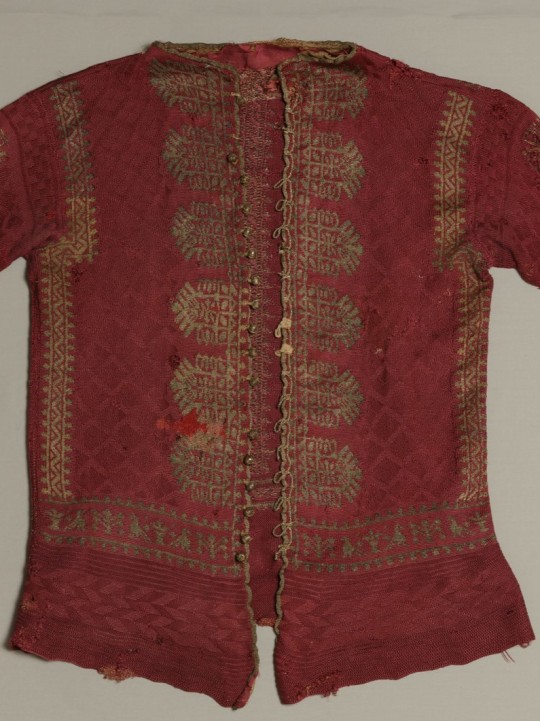
Knitted Jacket
1580s-1610s
Italy
LACMA (Accession Number: AC1995.1.1)
331 notes
·
View notes
Text
My Biggest and Most Annoying Fictional Horse Pet Peeve
Big Horses are a Very New Thing and they Likely Didn’t Exist in your Historical and/or Fantasy Settings.
You’ve all seen it in every historical piece of media ever produced. Contrary to popular belief, a big black horse with long legs and long flowing mane is not a widespread or even a particularly old type of horse.

THIS IS NOT A MEDIEVAL THING. THIS IS NOT EVEN A BAROQUE THING. THIS IS A NINETEENTH CENTURY CITY CARRIAGE HORSE.
All the love to fancy Friesian horses, but your Roman general or Medieval country heroine just really couldn’t, wouldn’t, and for the sake of my mental health shouldn’t have ridden one either.
Big warmblood horses are a Western European and British invention that started popping up somewhere around 1700s when agriculture and warfare changed, and when rich folks wanted Bigger Faster Stronger Thinner race horses.
The modern warmblood and the big continental draught both had their first real rise to fame in the 1800s when people started driving Fancy Carriages everywhere, and having the Fanciest Carriage started to mean having the Tallest and Thinnest Horses in the town.
Before mechanised weaponry and heavy artillery all horses used to be small and hardy easy-feeders. Kinda like a donkey but easier to steer and with a back that’s not as nasty and straight to sit on.
SOME REAL MEDIEVAL, ROMAN, OTTOMAN, MONGOL, VIKING, GREEK and WHATEVER HISTORICALLY PLAUSIBLE HORSES FOR YOU:
“Primitive”, native breeds all over the globe tend to be only roughly 120-140 cm (12.0 - 13.3 hh) tall at the withers. They all also look a little something like this:
Mongolian native horse (Around 120-130 at the withers, and decendants of the first ever domesticated horses from central Asia. Still virtually unchanged from Chinggis Khan’s cavalry, ancestor to many Chinese, Japanese and Indian horses, and bred for speed racing and surviving outdoors without the help of humans.)

Carpathian native horse / Romanian and Polish Hucul Pony (Around 120-150 at the withers, first mentioned in writing during the 400s as wild mountain ponies, depicted before that in Trajanian Roman sculptures, used by the Austro-Hungarian cavalry in the 19th century)

Middle-Eastern native horse / Caspian Pony (Around 100-130 at the withers, ancestor of the Iranian Asil horse and its decendants, including the famous Arabian and Barb horses, likely been around since Darius I the Great, 5th century BC, and old Persian kings are often depicted riding these midgets)
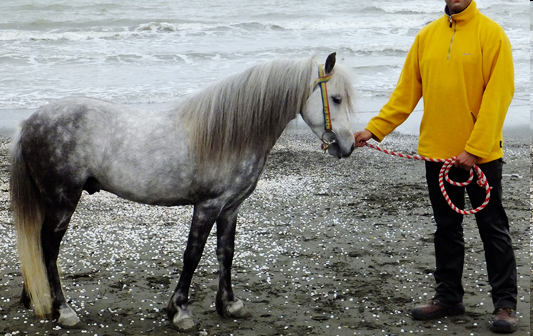
Baltic Sea native horse / Icelandic, Finnish, Estonian, Gotland and Nordland horses (Around 120-150 at the withers, descendant of Mongolian horses, used by viking traders in 700-900 AD and taken to Iceland. Later used by the Swedish cavalry in the 30 years war and by the Finnish army in the Second World War, nowadays harness racing and draught horses)

Siberian native horse / Yakutian pony (Around 120-140 at the withers, related to Baltic and Mongolian horses and at least as old, as well-adapted to Siberian climate as woolly mammoths once were, the hairiest horse there is, used in draught work and herding)

Mediterranean native horse / Skyros pony, Sardinian Giara, Monterufolino (Around 100-140 at the Withers, used and bred by ancient Greeks for cavalry use, influenced by African and Eastern breeds, further had its own influence on Celtic breeds via Roman Empire, still used by park ranger officers in Italy)
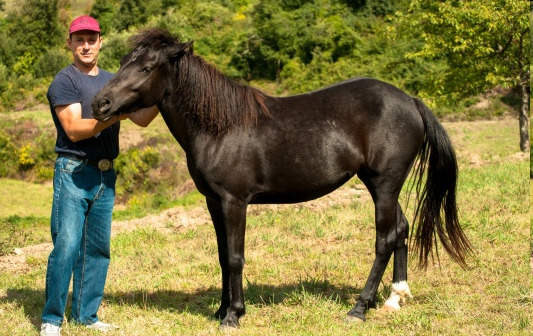
British Isles’ native horse / various “Mountain & Moorland” pony breeds (Around 100-150 at the withers, brought over and mixed by Celts, Romans and Vikings, base for almost every modern sport pony and the deserving main pony of all your British Medieval settings. Some populations still live as feral herds in the British countryside, used as war mounts, draught horses, mine pit ponies, hunting help and race horses)

So hey, now you know!
69K notes
·
View notes
Text
38 notes
·
View notes
Text
A post of mine from several months ago about the Perlesvaus self-rearranging forest just wandered across my dash again and made me think about it some more, so I wanted to talk about it a bit.
Perlesvaus, for those who don’t know, is a 13th-century French Arthurian romance. It’s intended to be a continuation of Chretien de Troyes’s Perceval, but it’s mostly known for being completely batshit when it’s known at all. (There’s an old book on Arthurian texts that dedicates a chapter to Perlesvaus and repeatedly speculates that the anonymous author had Something Wrong With Him. This is the longest scholarly treatment of Perlesvaus I’ve been able to find & read.)
Anyway, there’s an odd worldbuilding detail in the text. See, it’s a Thing in chivalric romances that the questing knights happen upon castles & lords & damsels & such that are unfamiliar to them and have to be explained. You know, “this is the Castle of Such-and-Such, where the local custom is as follows. It’s ruled by Lady So-and-So, whose character I shall now describe to you.”
This is a genre convention that largely goes unquestioned, but it’s a bit odd if you think about it. All these knights are at least minor nobility. They don’t know the other nobles in their region? They don’t know what castles are where? Don’t they have, like, diplomatic relations with these people or at least attend the same tournaments? Even if they’re all fully committed to the knight-errant lifestyle and don’t really engage in courtly diplomacy, you’d think they would share information with each other and get the lay of the land. But instead, to use TTRPG terminology, it’s like they’re all on a hexcrawl that was randomly generated just for them to have these adventures.
The author of Perlesvaus decides to address this. In what’s kind of a throwaway paragraph late in the text, he explains that God moves things around so knights always have new quests to do (and, presumably, is also making sure they always arrive at the right narratively-significant moment). So the reason they’re always encountering people & places they have no knowledge of is because those people & places really weren’t there yesterday. They didn’t know about the Castle of Such-and-Such because it’s normally a thousand miles away and the forest path they followed to get there used to lead somewhere else.
And I think that would be a really interesting thing to stick into a novel or a TTRPG or something. When a knight rides into the forest with the intent of Going On A Quest, at some point they go around a bend in the path, cross an invisible barrier, and wind up in the Forest of Narrative. This is a vast forest with no set geography, filled with winding paths and populated almost entirely with questing knights, damsels in search of questing knights, friendly hermits, strange creatures, and allegorical set-pieces. Then, at the narratively-appropriate time, they cross back over the invisible barrier back into the regular world, and find themselves wherever the Narrative has decided they need to be. This could be a different country, a different continent, or a different world entirely.
Whether anyone involved is actually aware that this is how it works is… optional, really. Though if it’s not a Known Phenomenon, the people whose jobs it is to handle trade & diplomacy & god forbid, maps, are going to end up tearing their hair out in frustration.
2K notes
·
View notes
Text

okay what did i miss
(yes some of these overlap and some are suppositions. for example if parchment is always used for ephemera, rough drafts, notes, and never re-used or re-purposed, we can also assume that the author is unaware of wax tablets as a concept)
6K notes
·
View notes
Text

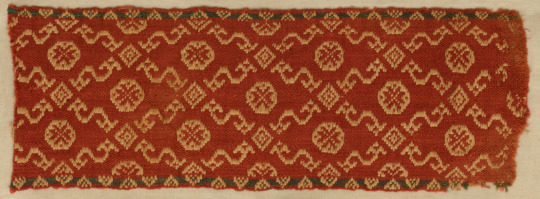



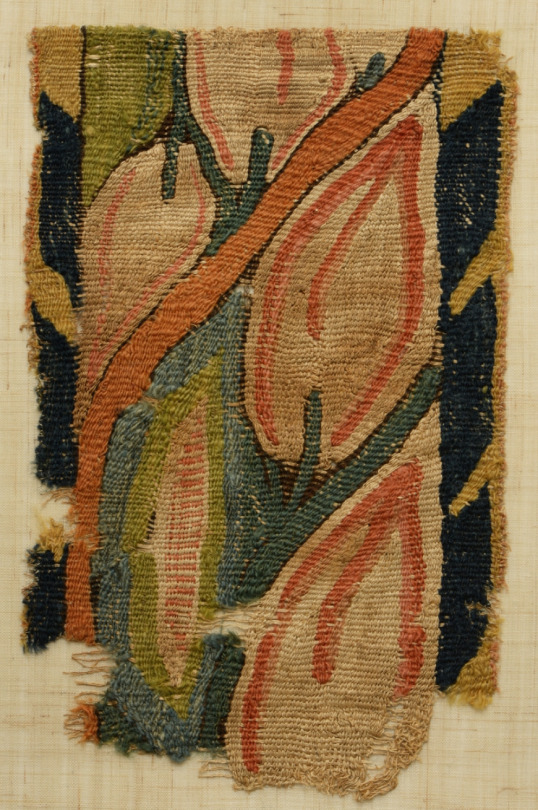
Fragments of Byzantine textile work, 2nd- 8th century CE. Mostly silk or wool. Egypt and Byzantium
72 notes
·
View notes
Text
Grumpy bird
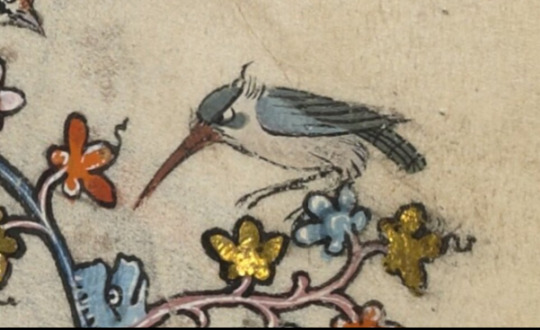
Bodleian Library MS. Bodl. 264, f. 112r
7K notes
·
View notes
Note
when did alchemy become chemistry?
Basically to make a long story short, it was around the late 1700s when we finally got off the corpuscular theory of matter, and switched over to something more resembling modern atomic theory.
Because what that did, was effectively remove the concept of transmutation. Alchemical transmutation can't happen if there aren't essences you can distill and switch around. And you can't really have alchemy without transmutation.
436 notes
·
View notes
Text

guy sitting by a fire
in a manuscript of jean de wavrin's "anciennes chroniques d'angleterre", flanders, c. 1470-90
source: Paris, BnF, Français 75, fol. 198r
17K notes
·
View notes
Text
About a year ago I was sitting in a really shitty corporate cafe and reading a book about medieval astronomy. There was a passage about how when we look up at the sky, we see titanic balls of gas all whirling about according to physics, but when a medieval person looked up at the sky, they saw literal divine clockwork turned by uncountable invisible spirits.
I was sitting in a shitty cafe, and I had a moment of realization. I knew logically that's how people used to see the night sky, but something about that moment just clicked. I felt what I can only describe as intellectual vertigo, as I realized "holy shit the world is really different than it was 700 years ago."
22K notes
·
View notes
Text
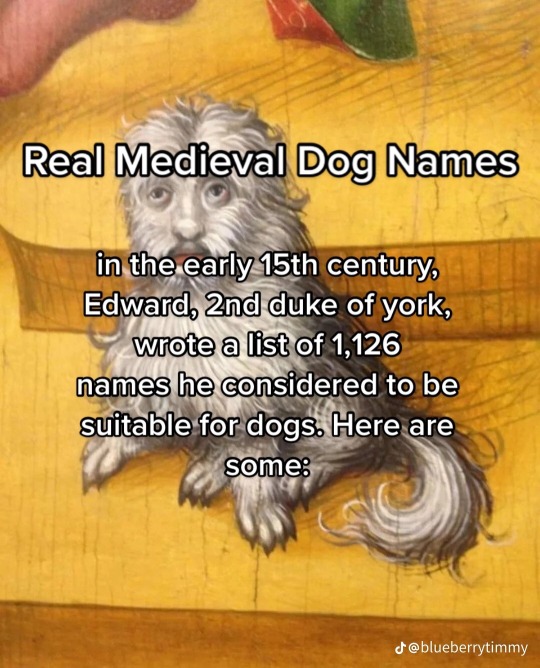


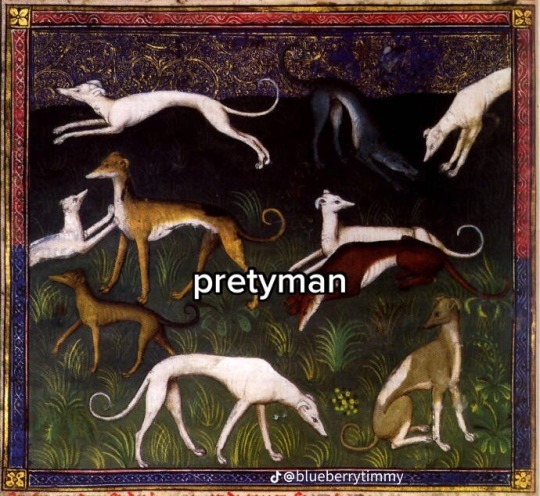



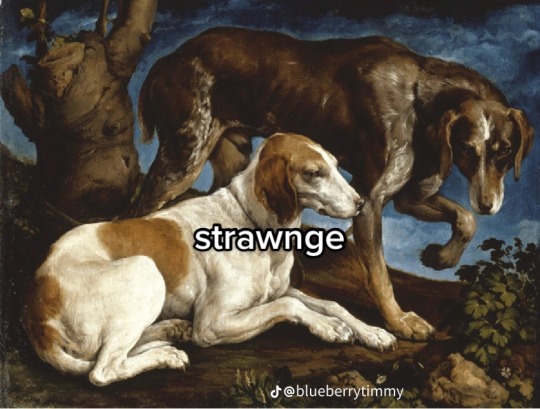


One of the most important things I have learned today..
162K notes
·
View notes
Text
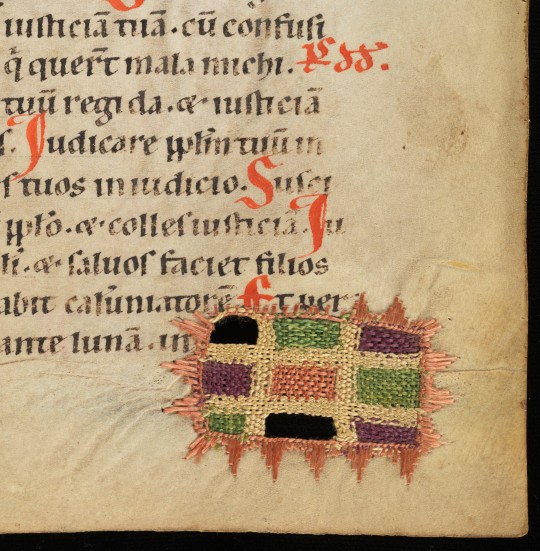
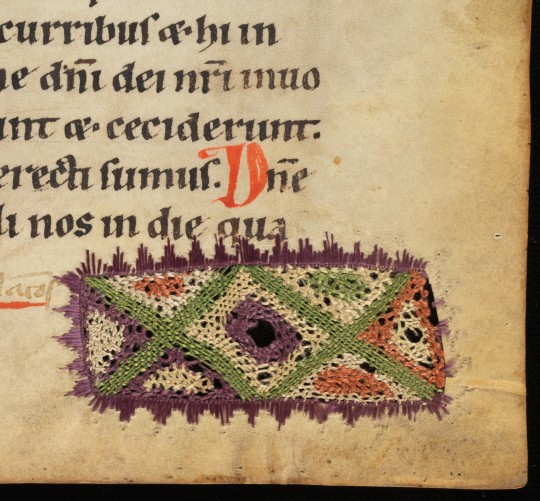

medieval parchment repairs
in a psalter, south-western germany, late 12th/early 13th c.
source: Hermetschwil, Benediktinerinnenkloster, Cod. membr. 37, fol. 19r, 53r, and 110r
8K notes
·
View notes
Photo

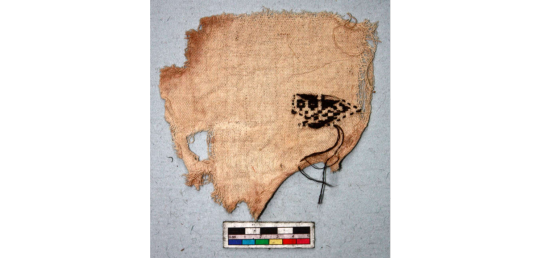
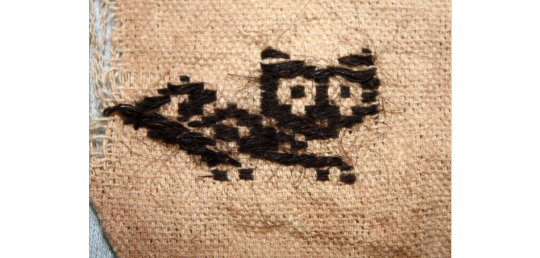
textile
Cultures/periods: Chimu (?) Chancay (?)
Production date: 900-1430
Made in: Peru
Provenience unknown, possibly looted
Textile fragment; cotton plain weave ground with paired warps; camelid supplementary weft patterning; feline figure; cream and black.
British Museum
26K notes
·
View notes
Text
medieval king streamer: woah thats a huge raid! Man the battlements!
41 notes
·
View notes
